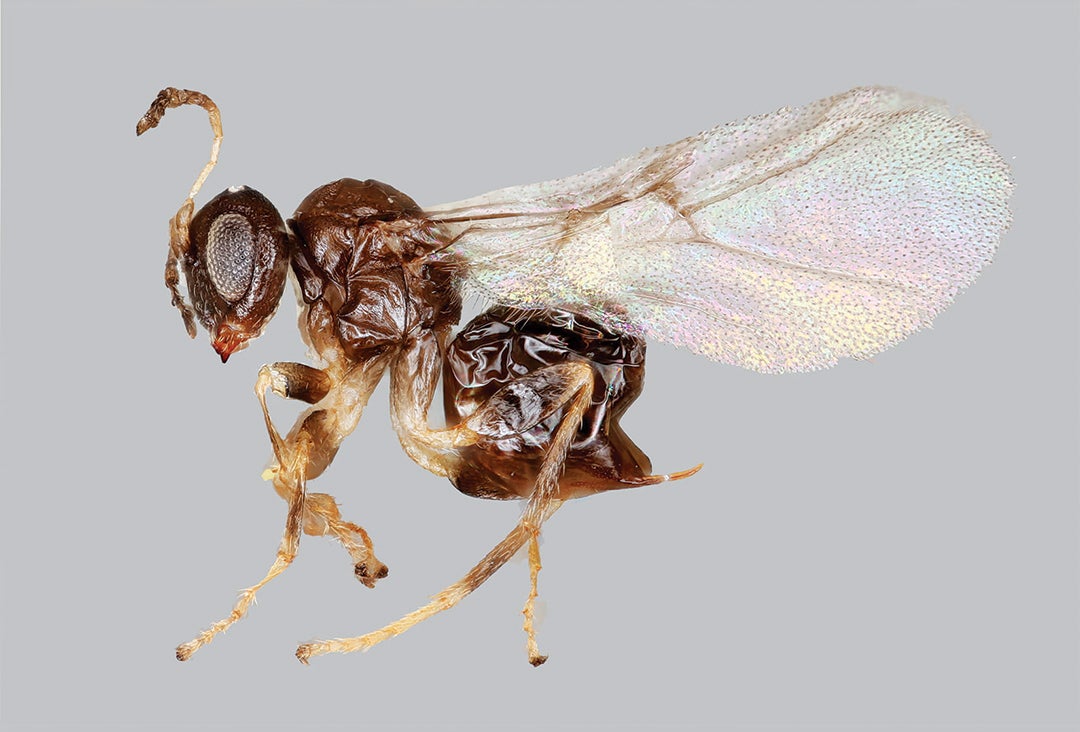Cheers to the Valhalla Wasp
A new species is named after Rice’s beloved pub.

Its name references heroes and gods of Norse mythology, but the newly discovered insect Neuroterus valhalla doesn’t look or act the part. It’s barely a millimeter long and spends 11 months of the year locked in a crypt. But it was discovered in a tree outside the graduate student pub. So when it came time to choose a name, the answer was obvious.
“It would have been a missed opportunity to not call it something related to Rice or Valhalla,” said graduate student Pedro Brandão-Dias, lead author of a January study describing the new species, a gall wasp from the family Cynipidae. The nonstinging wasps are a favorite of Brandão’s Ph.D. adviser, Scott Egan, because his students can find them in live oak trees across campus. N. valhalla is the first gall wasp species Egan’s lab has discovered, but in his eight years at Rice, his group has identified at least as many new species of galler parasites and predators.
It’s barely a millimeter long and spends 11 months of the year locked in a crypt. But it was discovered in a tree outside the graduate student pub. So when it came time to choose a name, the answer was obvious.
“In my lab, undergraduate and graduate students share in the experiential learning process by studying biologically diverse ecosystems on the live oaks right outside our front door,” Egan said.
N. valhalla is one of more than 1,000 species of cynipid wasps that trick host trees into feeding and sheltering their young. When the wasps lay eggs, they include a biochemical cocktail that coaxes the tree to form a crypt, or gall, around the egg. The gall shelters the egg and feeds larvae that hatch from it. Galls can form on leaves, inside branches and on oak flowers, which is where Brandão first collected N. valhalla in 2018.
“Once they emerge, they only live three or four days,” Brandão said of the tiny insects. “Their only purpose is to mate and lay eggs.” One reason it took almost four years to describe the new species is that N. valhalla — like many other gallers — lays eggs two times a year. The wasps Brandão discovered were the first generation. Their eggs would produce the alternate generation of wasps that lay eggs in the flowers the following year, but where did those eggs spend the intervening 11 months?
Thanks to a bit of serendipity, Kelly Weinersmithan, an adjunct assistant professor in biosciences at Rice, found the answer in a Florida oak tree. When she found gallers she couldn’t identify, she sent them to Egan’s lab. Genomic tests confirmed they were N. valhalla, and experiments by Brandão and Brown College junior Camila Vinson confirmed the alternate generation overwintered in galls at the base of newly formed branches on the tree.
Egan said alternate generations of gallers have often been mistaken for new species. Genomic sequencing proved the two generations were one species and allowed N. valhalla to live up to its legendary name: It’s the first new insect species described alongside its fully sequenced genome. — Jade Boyd
